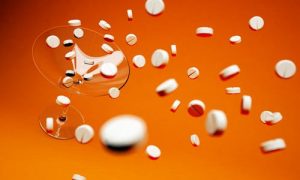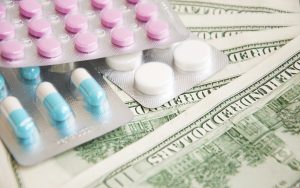The young kids of today are hooked to their Snapchat, IPads, and even Fortnite. While these activities are fun and help them communicate with their friends, what is a kid supposed to do if they are having troubles with a mental disorder? For children who already have mental illnesses like anxiety, PTSD, or depression, the answers can become even more vague since they won’t know all the words or terms to describe what they are going through. Some kids are very talkative and will have no trouble describing what thoughts they have, while others are quiet and might be shy to open up to even their parents.
As a form of holistic medicine, art therapy is a great way to get children to open up and connect without being afraid to be judged. They can freely express what is going through their mind to a therapist who intently listens to what they have to say. Learning about their thoughts and environment will crucially improve their social skills and personal sense of responsibility. Let’s look at the ways art therapy is well suited to help our young kids!

Using Art Therapy
Art therapy is a great way for young kids to let out their creative side, fear no judgement in a safe environment, and learn how to communicate easily about their feelings. This form of therapy is unique because it involves no medicine, can take on many mediums, and is welcome to patients to not only kids but adults of any age who have trouble processing their thoughts. Like any other therapy, the patient and the therapist have to form a bonda and stay patient with each other. Frustration and confusion is bound to happen, but sorting through these roadblocks together will make the patient learn many new things about themselves. Some ways art therapy is a great choice includes:
- Art therapy allows clients young and old to take part. Children love that they can draw anything about their world, while adults tend to love the stress relieving benefits that free drawing brings. Art therapy is available in almost every treatment center that is based around the idea of holistic therapy. Holistic therapy encompasses healing the body, mind, and the spirit at once rather than using medications to cover up a person’s problem. Do some digging into what centers are around your area to sign up for a great art therapy program near you.
- Some of the most popular art therapy methods are active imagination therapy, gestalt art therapy, and third hand. Gestalt is a form that I have firsthand experienced even in grade school. Being able to draw whatever I wanted helped me process my thoughts and calm down my mind during the school day. On the other hand, active imagination allows patients to practice free association with words or images that come to their mind while they create their form of art. For those who have problems with anxiety, this is great so they can better reflect on their own feelings instead of reacting to people in an unhealthy way. Lastly, third hand allows the client and the therapist to form a team and produce artistic images together. Through this method, the two parties learn more about each other and a strong sense of trust is built for the client to feel comfortable to share more.
- Art therapy is available on multiple mediums. Over one hundred years ago, the early stages of art therapy strictly used what tools were available at the time. Children would take paints, crayons, and charcoal to draw what images helped express their dreams, thoughts, and environments. Today, thousands of art tools are available and can range from colored pencils, knitting, water colors, to clay sculpting and magazine collages. The way a patient will choose their medium is to tell the therapist more about themselves and what kinds of art they enjoy doing. If the child has a hard time communicating, usually parents will step in and help point the therapist to mediums that they have observed the child doing in their spare time. Today, with the amount of digital mediums in our toolkit art therapy can include digital collaging by online software, 3D printing various objects, and creating animated drawings.
- Kids learn how to build better communication skills. There are some things that can’t be taught through a textbook, especially when it comes to building stronger emotional intelligence. Art therapy a natural method of treatment that helps children build self-expression, a more positive perspective on their world, and a stronger sense of self independence. They learn to understand what emotions like anger or fear are, and what to do when they come across a strong feeling like it again in the future. A child can also work through any difficult experiences they went through by drawing about them. This is much more stress relieving than trying to every detail and relieve negative memories.
- Art therapy is full of variety and is always changing. A patient will never have a boring session where they don’t’ learn something new about themselves. Since art is so versatile, their creations will always be different and may show a different side of their personality. This is enjoyable for the therapist to learn about a patient’s experiences and helps the child look forward to sessions instead of dread them. Parents also can rest easy that the child will view therapy is a fun activity to participate in rather than worry than they may take out their depression or anger somewhere else.
Art Therapy In The Future
Art therapy was much different one hundred years ago compared to today. Our world is changing and our technology acts as almost an extension of our bodies at this point. Social media is everywhere, and the kids of today are quite familiar with being on it frequently throughout the day. As art therapy gains traction and slowly welcomes more digital mediums, children will benefit from its benefits of allowing them to decompress, let go of their fears, and gain self-awareness. Since younger children also usually have a lot of questions about new programs, make sure that you listen to them and allow them to learn from your answers. Don’t be impatient or annoyed if they are skeptical at first, you may have felt the same if you once started a new program for you mental health. If you want to learn more about what art therapy services are running in your local community, check out what is located in nearby schools and counseling locations. Some therapists might specialize in art therapy for younger patients like children or teenagers. Ask questions and never be afraid to try something you haven’t thought of before!










